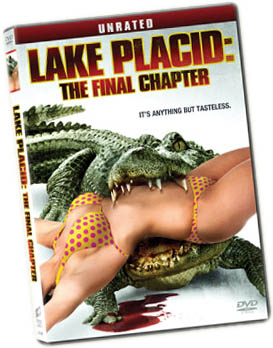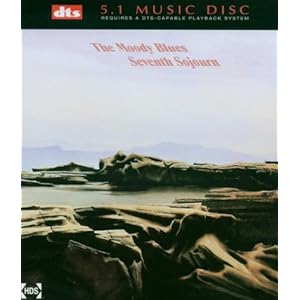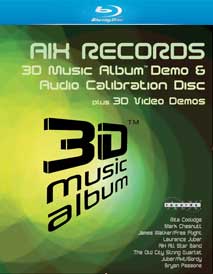From a Wall Street Journal tech report:
Yep, that guy in the middle. Or maybe it’s not. Imagine looking like the murderer of Peter Weller and, consequently, a contributor to the creation of Robocop:
From a Wall Street Journal tech report:
Yep, that guy in the middle. Or maybe it’s not. Imagine looking like the murderer of Peter Weller and, consequently, a contributor to the creation of Robocop:
 Just received a press release for a DVD for the latest in the unexpected monster-in-the-lake franchise, Lake Placid. The new one is called Lake Placid: The Final Chapter. I ducked over to IMDB to see what it might be like and two things stood out. First, the user rating was 4.0/10. Second, the front page user comment was entitled: ‘The best of the Lake Placid movies since the first’.
Just received a press release for a DVD for the latest in the unexpected monster-in-the-lake franchise, Lake Placid. The new one is called Lake Placid: The Final Chapter. I ducked over to IMDB to see what it might be like and two things stood out. First, the user rating was 4.0/10. Second, the front page user comment was entitled: ‘The best of the Lake Placid movies since the first’.
And you know
, the sad thing is that the commentator is probably right.
The original movie with well-known actors scores a pretty poor 5.5/10. The next two get only 3.1 and 3.5 stars, so with 4.0/10 The Final Chapter apparently is both dreadful and the best after the original.
If you want to know lots about how digital audio works, and a pretty damned convincing explanation as to why high resolution audio (24 bit, up to 192kHz sampling) is a waste, I can’t recommend too highly this piece from by Monty Montgomery from xiph.org: ‘24/192 Music Downloads … and why they make no sense’.
There is one small divergence in my views. I think the claim that sound might be degraded by intermodulation distortion due to ultrasonic content is overblown. Technically I’m certain it could make an appearance. But I note that the test file for this contained in the article carries two sine waves at 30 and 33kHz
, both of which are around -6dBFS. In real world recordings content above 20kHz is very low, typically -60dB or more. Here, for example, is the spectrum of the output of the two channel SACD version of ‘Money’ from Pink Floyd’s Dark Side of the Moon … a loud bit, normalised to full scale:
Notice that at 20kHz the output is around -84dBFS, and it rapidly falls to over -100dBFS? Any IM products these produce would be way below audibility.
The one thing I’d add in support of the piece, but which is not covered therein, is that 24 bit audio blows out the download file sizes disproportionately for the losslessly compressed versions, roughly doubling them in my estimation, rather than increasing them by the expected 50%. (The reason why is here.)
(Also, I have a test pressing of The Three Musketeers — no box, no slick — for the first to request it in comments. Australian postal addresses only.)
Two things I remember from computer magazines from the days when both computers and I were young were: code segments and benchmarks.
There’d be chunks of computer code that you could type in. Some were merely small routines, some were multipage listings of useful little programs. Mostly they were in BASIC, and could with minimal adjustments be made to run in most computers. Some were specific machine language chunks — which were simply lists of numbers and thus great fun to type in … A BASIC program would invoke these for faster performance in certain high-intensity functions.
Benchmarks were short programs that performed a function for a specific number of loops to see how fast the computer (or language) operated.
The problem with benchmarks is that both computers and programming languages got better. Some compilers had optimisation routines that would detect and eliminate pointless sections of code … such as loops. And where they still worked, a program that provided a useful speed measure would be obsolete a few years later for the crime of now running far too fast.
However it turns out that one consistent benchmark has been in use by one John Walker, a co-developer of AutoCAD, for a very long time. It uses intensive floating point operations. Read the gory details here. And check out the results.
Unfortunately dates and years aren’t listed
, but near the top of the benchmark list are multiple entries for the IBM PC/AT running the Intel 80286 processor at 6MHz. That was a pivotal machine in the development of the personal computer industry, both in itself and as the basis for innumerable clones. It was available from 1984 to 1987.
The machine used in these benchmarks would have been far faster than in these floating point operations than the norm because it also sported an 80287 maths co-processor. (Later in the Intel lineage — with the introduction of the 80486 — the co-processor became part of the standard chip.)
Indeed, his list of results spans the years from then until a 3.4GHz Pentium 4, which is a processor released in 2004 and which presumably falls way short of modern performance.
So, in those twenty or so years the time to run a thousand iterations of this benchmark in a compiled C program (using the maths co-pocessor) has fallen from a best of 63.07 seconds to 0.00862 seconds. That is, it was 7,000 times faster.
Incidentally, the run time on the PC/AT using Basic rather than C was over 3,000 seconds.
Watch this video and see if you can see how it works:
The Kaiser Baas product, called the ‘CONTACT’, is just under $60.
My first thought was that it senses the vibration, or has a little microphone built in. But no, apparently it uses something called ‘near field audio’. This doesn’t even have a Wikipedia entry yet. It seems that the gadget picks up the sound by means of good old fashioned magnetic induction from the speaker in the phone. (Remember the suction cap gadgets by which you could record a call from an old-fashioned microphone telephone?)
That makes it pretty much independent of the model — so long as you put it in the right place for the unit’s built in speaker to be detected by the induction coil. Of course it won’t work with an iPod Classic
, Nano or Shuffle (no speakers in them to induce any currents). And the sound may very depending on the source unit since they may have shaped frequency responses to optimise the performance of their pitiful inbuilt speakers, and this is presumably different from model to model.
Still, an interesting concept. I’ll see if I can get ahold of one to review.
 I was looking for fine music — multichannel if possible — to listen to earlier today. But I didn’t want to switch on the projector or a TV to navigate through menus, so that ruled out (sort of) DVD Audio. I had a flick through the SACDs and the very few DTS CD encodes, and settled on one of the latter: The Moody Blues, Seventh Sojourn, which has a bunch of excellent songs. But for some reason I’ve never actually sat down and listened to this disc, even though I must have bought it five or more years ago.
I was looking for fine music — multichannel if possible — to listen to earlier today. But I didn’t want to switch on the projector or a TV to navigate through menus, so that ruled out (sort of) DVD Audio. I had a flick through the SACDs and the very few DTS CD encodes, and settled on one of the latter: The Moody Blues, Seventh Sojourn, which has a bunch of excellent songs. But for some reason I’ve never actually sat down and listened to this disc, even though I must have bought it five or more years ago.
This disc is physically a CD, although it can’t be called such because although the tracks look like PCM to the outer world, the encoding is DTS. Play it on, say, a DVD or Blu-ray player — or even a CD player connected via S/PDIF — with the output set to bitstream and your home theatre receiver will detect that it’s a DTS bitstream, not PCM. If it makes a mistake then you will get a very high level of very nasty noise.
Now DTS is a very respectable codec. At the 1509kbps bitrate used on discs like this is it actually lossless much of the time, going lossy only when things get too busy. Not only was DTS the codec used on this disc
, it was actually produced by DTS Inc. (back in 2001 the insert says).
So one way or another DTS is responsible for the poor sound quality of this disc. I’d say it was the mixing and EQ rather than the codec, which really is pretty transparent. The problem is with the tonal balance: it zings. There is sibilance in the vocals and the cymbals on some of the tracks — especially ‘Isn’t Life Strange’ — are very nearly painfully … well, not so much forward, because the surround mix has them largely overhead. But far too strong and strident.
Of course, to confirm this I had to check that the system was operating properly. That involved playing Janice Joplin on SACD, The Police on DTS-CD, more Moody Blues (Days of Future Passed) on DTS-CD, Deodato on CD and King Crimson on DVD Audio. Ah, the sacrifices one has to make!
Oh, they all sounded fine. I’m afraid the DTS-CD version of Seventh Sojourn really is quite poor. Although, to be fair, I don’t know what the original sounds like so perhaps it’s supposed to sound that way.
I rather like audiophile music brands. It’s nice to have recordings captured with integrity, often with higher than usual resolution, sometimes with surround sound. I like Blue Coast Records for just that reason. I’ve downloaded one of its DSD files for testing purposes, and on the rare device which can play it this sounds wonderful.
But I stumbled across something which casts into doubt any and all of its claims.
It sells some of its recordings on ‘MQD’ CDs. MQD stands for ‘Master Quality Disc’ and they are carefully constructed and use a 24 karat gold data layer. Blue Coast says that they are archival quality and can last for 300 years.
All that’s well and good, if true.
The company will also sell you blank MQD CDs, which you can burn yourself (does the dye on a recordable disc last as long as the gold substrate? Who knows!)
This is where things go off the rails. It makes a number of claims which are just plain idiotic:
When used for mastering music
, we have noticed an increase of approximately ½ db in volume along with better frequency response and enhanced imaging when compared to our former mastering discs. We suggest you compare with your regular blank discs by recording the same music on to both and do a blind listening test.
Now they say that these discs have a lower error rate, by which I assume they mean a reduced number of incorrectly recorded bits. But this ought to be low anyway. What it cannot do is change either the volume or the frequency response, let along the imaging. It simply can’t.
To increase the level by some portion of a decibel means to alter the actual samples. Not just a few, but tens of thousands of them on a wholesale basis by a significant amount. If this is the more accurate medium, then the replaced one must have been on average reducing the absolute value of the samples. By how much? Half a decibel reduction is a 5.6% reduction.
But why would errors be biased towards the zero value? Bit errors should be random around the correct value.
And how would this affect frequency response? I assume they mean the top end, but bit accuracy has no effect on any particular frequency. The stream of samples is pretty indifferent to frequencies, and all the different frequencies are plastered over the top of all the other frequencies.
Still, they give themselves the traditional out: ‘Many of you may not hear the difference, which is fine. But a few of you will.’
In fact, if a half decibel of volume were a reality, it would be clearly revealed in properly conducted double blind tests. Not necessarily as volume difference, but as some qualitative difference. In fact, what this statement does is prime some people so that they are more likely to imagine a difference.
The problem with these silly claims is that they lead me to doubt the reliability of their other claims.
This is weird:

Just a cute picture picture of a dog and a kid
, right?
Absolutely, animated and all. But check out the file name extension: *.jpg. An animated JPEG? Google that and you’ll find lots of seemingly authoritative statements that such a thing isn’t possible.
Download it and it displays in Windows picture viewer as animated, although the speed is quite a bit slower.
Strange.
(Original found here.)
 Well, here is where a blog post was supposed to go. But it got totally out of control, and turned itself into a 1,200 word article. A very interesting one I like to think. So interesting that I ought to be able to sell it.
Well, here is where a blog post was supposed to go. But it got totally out of control, and turned itself into a 1,200 word article. A very interesting one I like to think. So interesting that I ought to be able to sell it.
So you won’t see it here. But it does concern very useful information revealed by the disc you see to the right: the AIX Records ‘3D Music Album Demon & Audio Calibration Disc‘, which you get with new Oppo Blu-ray players or can purchase separately (go to the link).
A hint: since Dolby Digital is embedded in Dolby TrueHD audio for legacy support, but otherwise has nothing whatsoever to do with the TrueHD, then there’s no particular reason why it should actually have the same program material.
Since this blog post ended up being pretty empty
, how about a giveaway? The production Blu-ray disc for Battle Royale, the controversial R-rated Japanese teenage-fight-to-the-death movie. Like The Hunger Games, but with more blood, more dead people, and that slightly strange Japanese overacting. Over 18s only, Australian postal addresses only, first request in comments. No box or slick.